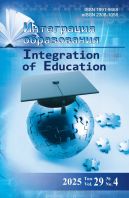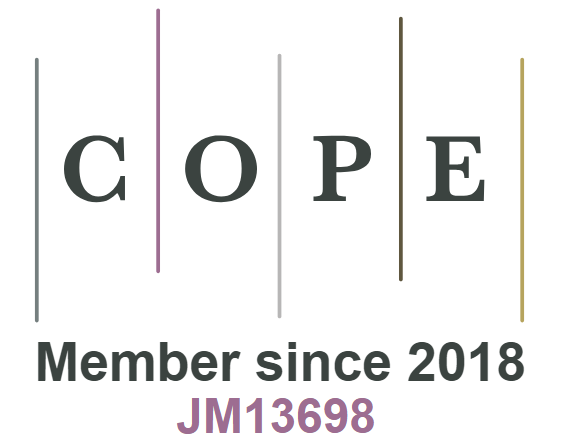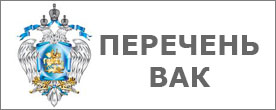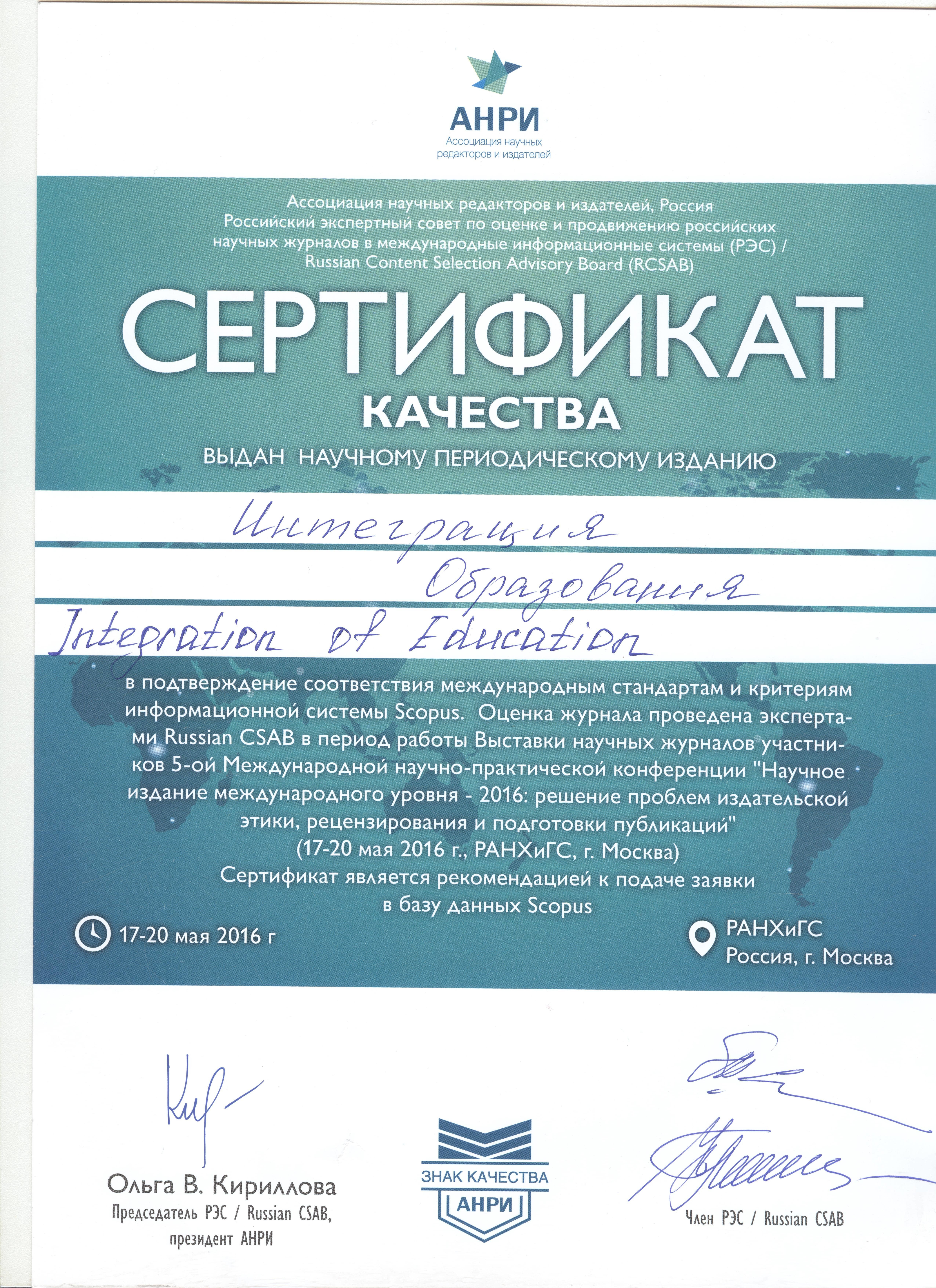DOI: 10.15507/1991-9468.104.025.202103.440-462
Self-Determination and Self-Realization of the Youth of Russia: Socio-Moral and Psychological-Pedagogical Aspects of the Problem
Asat G. Abdullin
Senior Researcher of the Chair of Psychology of Management and Service Activities, South Ural State University (76 Prospekt Lenina, Chelyabinsk 454080, Russian Federation), Dr.Sci. (Psychol.), Professor, ORCID: https://orcid.org/0000-0002-0804-6148, This email address is being protected from spambots. You need JavaScript enabled to view it.
Valery V. Likholetov
Professor of the Department of Economic Security, South Ural State University (76 Prospekt Lenina, Chelyabinsk 454080, Russian Federation), Dr.Sci. (Ped.), Cand.Sci. (Eng.), ORCID: https://orcid.org/0000-0001-7131-7302, This email address is being protected from spambots. You need JavaScript enabled to view it.
Irina G. Ryabova
Head of the Chair of Humanities, Natural Science and Technical Disciplines, Branch of the South Ural State University in Nizhnevartovsk (9 Mir St., Nizhnevartovsk 628609, Russian Federation), Cand.Sci. (Philos.), Associate Professor, ORCID: https://orcid.org/0000-0003-1808-7725, This email address is being protected from spambots. You need JavaScript enabled to view it.
Introduction. The complex problems of upbringing and education of young people, their choice of landmarks in their life path, occupations and self-realization, which are relevant for the progress of the modern world, are studied by scholars from many countries. However, the existing specialization of sciences and the prevailing system of preferences of different scientific schools serve as an obstacle to inter- and transdisciplinary research. The purpose of the article is to present the results of the analysis of the vast problematic field of self-determination and self-realization of modern Russian youth.
Materials and Methods. To study the problem, an analysis of statistical data and the results of sociological surveys, a cluster grouping of threats-problems in the sphere of self-determination and self-realization of youth was used for subsequent topological modeling. It was done by constructing and analyzing an oriented (causeand- effect) graph of threats as undesirable effects in order to identify key problems. When constructing a directed graph from threat-problems, the method of functional analysis of cause-and-effect chains tested in the study of a variety of non-standard problem situations in the theory of inventive problem solving was used.
Results. Based on the results of the analysis of the cause-and-effect multigraph, built on the basis of 33 threatsproblems as troubles, four reasons of the first level were identified: “brain drain”, violation of the principle of social justice in the country, lack of ideological unity of society due to the ban on state ideology, low religiosity of society. This is followed by three reasons of the second level: the lack of a coherent state youth policy, the ineffectiveness of the existing model of such a policy, a unified state exam as one of the key reasons for the random choice of vocational training for young people.
Discussion and Conclusion. The results obtained add up to the development of comprehensive research on the problems of youth self-determination and self-realization that are extremely important for the countryʼs optimistic future.
Keywords: youth and education, ideology and social ideals, culture and morality, employment, state and politics, personality, self-determination and self-realization
The authors declare no conflict of interest.
For citation: Abdullin A.G., Likholetov V.V., Ryabova I.G. Self-Determination and Self-Realization of the Youth of Russia: Socio-Moral and Psychological-Pedagogical Aspects of the Problem. Integratsiya obrazovaniya = Integration of Education. 2021; 25(3):440-462. DOI: https://doi.org/10.15507/1991-9468.104.025.202103.440-462
All authors have read and approved the final manuscript.
Submitted 25.03.2021; approved after reviewing 17.05.2021;
accepted for publication 31.05.2021.

This work is licensed under a Creative Commons Attribution 4.0 License.





























